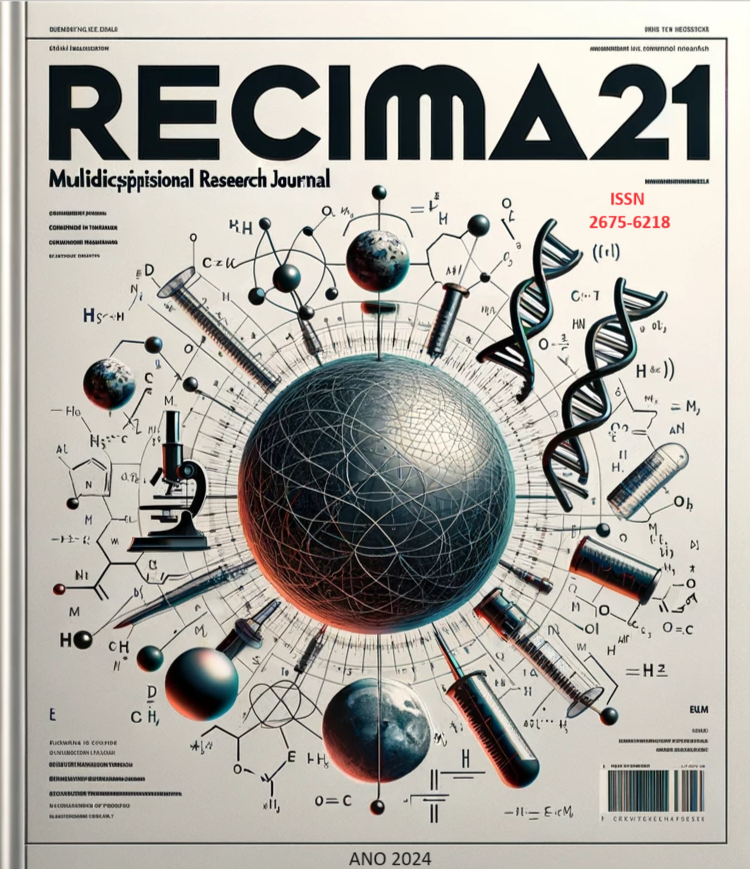DEMENTIA WITH LEWY BODIES: AN ANALYSIS OF PATHOLOGY, DIAGNOSIS AND THERAPEUTIC INTERVENTIONS THROUGH A LITERATURE REVIEW
DOI:
https://doi.org/10.47820/recima21.v5i2.4907Keywords:
Lewy body dementia, Pathology, Diagnosis, Therapeutic interventionsAbstract
Introduction: Dementia with Lewy bodies (DCL) is the second most common cause of neurodegenerative dementia, presenting challenges in diagnosis and clinical management due to its symptomatic complexity. Objective: This article aims to provide a comprehensive analysis of the pathology, diagnosis and therapeutic interventions in DCL. Methods: This is a bibliographic review, using articles present in the following databases: PubMed, Scopus and Web of Science. Original articles and systematic reviews in English and Portuguese published between 2015 and 2024 were included, which addressed pathology, diagnosis and therapeutic interventions in DLB. After analysis, 15 articles were selected to prepare this bibliographic review. Discussion: The clinical features of CLD were addressed, including distinctive symptoms and challenges in differential diagnosis. The pathogenesis involves mechanisms such as the formation of alpha-synuclein aggregates and synaptic dysfunction. Current therapeutic options are mainly aimed at relieving symptoms, but there are no curative treatments. Conclusion: DCL represents a challenging neurodegenerative condition, requiring early diagnosis and appropriate management to improve patients' quality of life. Continued research into biomarkers and targeted therapies is essential to advance the knowledge and treatment of DCL. Awareness and a multidisciplinary approach are key to optimizing clinical outcomes.
Downloads
References
BURSON, Kathy C. Early Detection of Decline in Executive Functioning in Alzheimer's, Frontotemporal, and Lewy Body Dementia. 2022. Tese (Doutorado) - Fielding Graduate University, S. l., 2022.
CHIMAGOMEDOVA, A.; VASENINA, E.; LEVIN, O. S. "Diagnostic of prodromal dementia with Levy bodies." Zhurnal Nevrologii i Psikhiatrii Imeni SS Korsakova, v. 117, n. 6, Vyp. 2, p. 23-32, 2017. DOI: https://doi.org/10.17116/jnevro20171176223-32
DE AZEVEDO, António Gil Cabral. Neuroinflammation patterns in Alzheimer´ s disease, dementia with lewy bodies and cases with mixed pathology. [S. l.: s. n.], 2022.
FERMAN, T. J.; SMITH, G. E.; KANTARCI, K.; BOEVE, B. F.; PANKRATZ, V. S.; DICKSON, D. W.; KNOPMAN, D. S. Nonamnestic mild cognitive impairment progresses to dementia with Lewy bodies. Neurology, v. 81, n. 23, p. 2032-2038, 2013. DOI: https://doi.org/10.1212/01.wnl.0000436942.55281.47
GOMPERTS, S. N.; LOCASCIO, J. J.; MAKARETZ, S. J.; SCHULTZ, A.; CASO, C.; VASDEV, N.; GROWDON, J. H. Tau positron emission tomographic imaging in the Lewy body diseases. JAMA Neurology, v. 73, n. 11, p. 1334-1341, 2016. DOI: https://doi.org/10.1001/jamaneurol.2016.3338
KANTARCI, Kejal et al. Multimodality imaging characteristics of dementia with Lewy bodies. Neurobiology of aging, v. 33, n. 9, p. 2091-2105, 2012. DOI: https://doi.org/10.1016/j.neurobiolaging.2011.09.024
KIM, Tae-Hui. Diagnosis and management of dementia with Lewy bodies. Journal of Korean Geriatric Psychiatry, p. 75-81, 2012.
MCKEITH, I.; DICKSON, D. W.; LOWE, J.; EMRE, M.; O'BRIEN, J.; FELDMAN, H.; YAMADA, M. Diagnosis and management of dementia with Lewy bodies: Fourth consensus report of the DLB Consortium. Neurology, v. 89, n. 1, p. 88-100, 2017.
MOLLENHAUER, Brit et al. Baseline predictors for progression 4 years after Parkinson's disease diagnosis in the De Novo Parkinson Cohort (DeNoPa). Movement Disorders, v. 34, n. 1, p. 67-77, 2019. DOI: https://doi.org/10.1002/mds.27492
PARMERA, Jacy Bezerra et al. Diagnóstico e manejo da demência da doença de Parkinson e demência com corpos de Lewy: recomendações do Departamento Científico de Neurologia Cognitiva e do Envelhecimento da Academia Brasileira de Neurologia. Dementia & Neuropsychologia, v. 16, p. 73-87, 2022. DOI: https://doi.org/10.1590/1980-5764-dn-2022-s105pt
PENG, Chao et al. Cellular milieu imparts distinct pathological α-synuclein strains in α-synucleinopathies. Nature, v. 557, n. 7706, p. 558-563, 2018. DOI: https://doi.org/10.1038/s41586-018-0104-4
SEGERS, Kurt et al. Dementia with Lewy bodies in first-generation immigrants in a European memory clinic. Acta Neurologica Belgica, v. 121, p. 219-223, 2021. DOI: https://doi.org/10.1007/s13760-020-01492-2
STINTON, Chris et al. Pharmacological management of Lewy body dementia: a systematic review and meta-analysis. American Journal of Psychiatry, v. 172, n. 8, p. 731-742, 2015. DOI: https://doi.org/10.1176/appi.ajp.2015.14121582
ZIS, Panagiotis et al. The range and nature of non-motor symptoms in drug-naive Parkinson’s disease patients: a state-of-the-art systematic review. npj Parkinson's Disease, v. 1, n. 1, p. 1-8, 2015. DOI: https://doi.org/10.1038/npjparkd.2015.13
ZOU, Wen‐Quan et al. Variably protease‐sensitive prionopathy: a new sporadic disease of the prion protein. Annals of neurology, v. 68, n. 2, p. 162-172, 2010. DOI: https://doi.org/10.1002/ana.22094
Downloads
Published
License
Copyright (c) 2024 RECIMA21 - Revista Científica Multidisciplinar - ISSN 2675-6218

This work is licensed under a Creative Commons Attribution 4.0 International License.
Os direitos autorais dos artigos/resenhas/TCCs publicados pertecem à revista RECIMA21, e seguem o padrão Creative Commons (CC BY 4.0), permitindo a cópia ou reprodução, desde que cite a fonte e respeite os direitos dos autores e contenham menção aos mesmos nos créditos. Toda e qualquer obra publicada na revista, seu conteúdo é de responsabilidade dos autores, cabendo a RECIMA21 apenas ser o veículo de divulgação, seguindo os padrões nacionais e internacionais de publicação.













